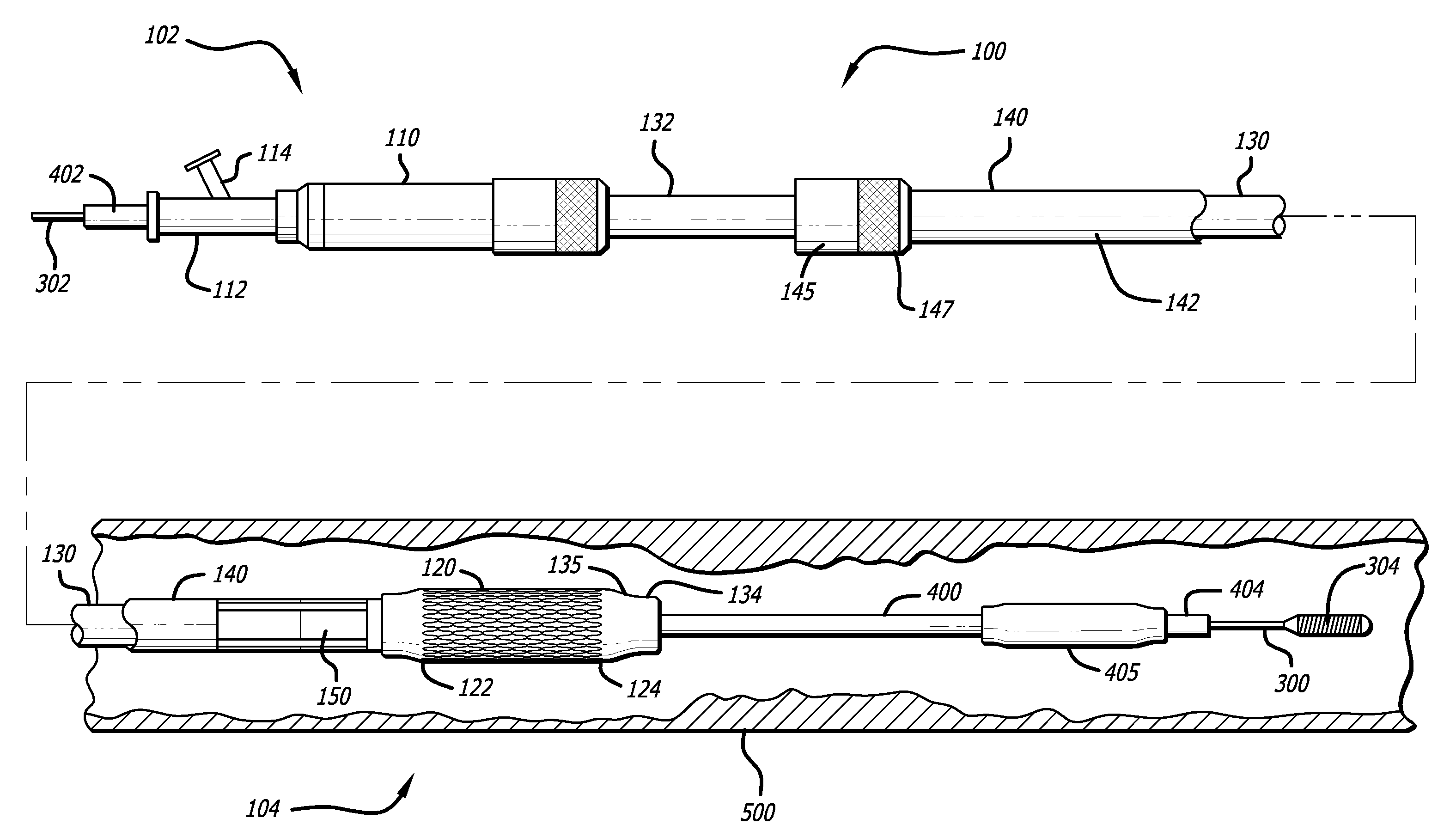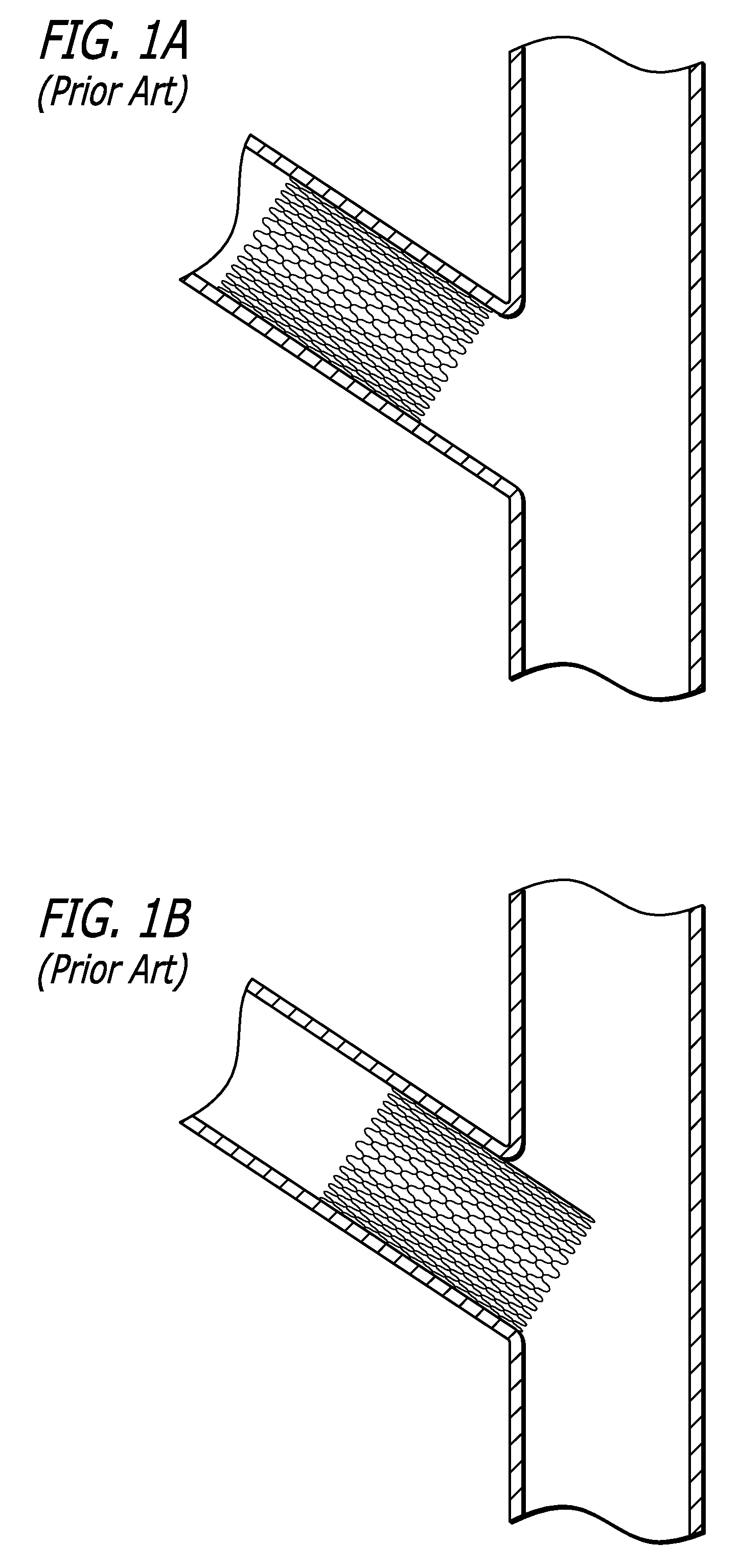Ostial lesion stent delivery system
a stent and ostial lesion technology, applied in the field of stent delivery system, can solve the problems of difficult stenting of ostial lesions, unfavorable reactions, and stents may block access to adjoining vessels that require further intervention, and achieve the effect of reducing thickness
- Summary
- Abstract
- Description
- Claims
- Application Information
AI Technical Summary
Benefits of technology
Problems solved by technology
Method used
Image
Examples
Embodiment Construction
[0031]The method and apparatus of the present invention is configured for repairing a vessel at a bifurcation without obstructing blood flow through the bifurcation. Many other prior art attempts at implanting intravascular stents in a bifurcation have proved less than satisfactory. The present invention includes an assembly and method for treating bifurcations in, for example, at an aorto-ostium, in the coronary arteries and veins and in other vessels of a human body (patient). The apparatus of the present invention includes an ostial stent delivery system having an anchor mechanism for positioning an expandable ostial stent within a diseased portion of a bifurcation so that the tubular body of the stent is seated within a side branch to the bifurcation, thereby repairing the vessel at the bifurcation without occluding blood flow. The anchor mechanism includes a plurality of wing-like members for holding the stent at a desired location in the side-branch of the main vessel. The ste...
PUM
 Login to View More
Login to View More Abstract
Description
Claims
Application Information
 Login to View More
Login to View More - R&D
- Intellectual Property
- Life Sciences
- Materials
- Tech Scout
- Unparalleled Data Quality
- Higher Quality Content
- 60% Fewer Hallucinations
Browse by: Latest US Patents, China's latest patents, Technical Efficacy Thesaurus, Application Domain, Technology Topic, Popular Technical Reports.
© 2025 PatSnap. All rights reserved.Legal|Privacy policy|Modern Slavery Act Transparency Statement|Sitemap|About US| Contact US: help@patsnap.com



